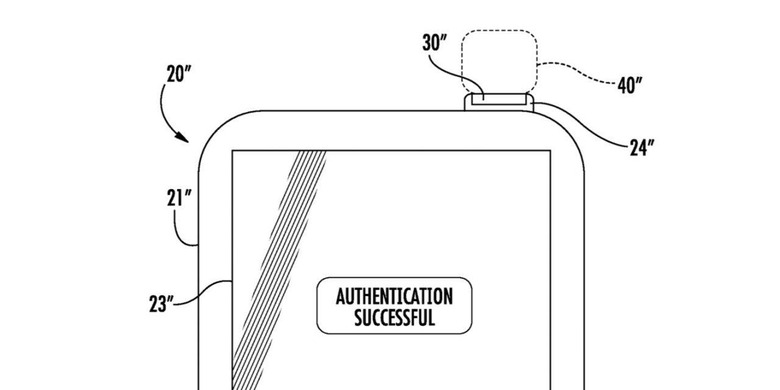The Big iPhone 8 Touch ID Question May Just Have Been Answered
It's already a given that Apple wants to give the iPhone 8 the biggest possible display for 2017, but the jury is still out on where that leaves its fingerprint sensor. Getting rid of the home button has obvious benefits, but a rear-mounted Touch ID scanner is ergonomically questionable, while integrating it into the Retina display is technologically tricky. Now, another way for Apple to slim the new iPhone's bezels and maximize screen real-estate without sacrificing Touch ID has emerged, an alternative to baking the sensor into the display itself.
That's been the expected route for the iPhone maker to take, doing away with the dedicated home button and extending the display down to the bottom edge of the phone. The technology certainly exists to integrate a biometric sensor into a screen; indeed, Apple was granted a patent for such a system earlier this year. However, by all rights it's also technologically tricky.
Indeed Samsung is believed to have wanted to use such a system in the Galaxy S8, but have been foiled by its complexities. The rumor mill is still divided on whether the South Korean firm will have refined such a system in time for the Galaxy Note 8 later this year. Most recent reports suggest that it's still beyond them, at least at the sort of scale that would be required for a mass-market smartphone.
Now, a new patent awarded to Apple suggests another possible location for Touch ID. Rather than in the display, or on the rear of the phone, it might see the sensor relocated to the power button. The patent – titled "Finger biometric sensor assembly including direct bonding interface and related methods" and granted on June 13, almost exactly two years after it was filed – describes a new, much smaller fingerprint sensor. That decrease in size opens up fresh possibilities for where it could be positioned.

By doing away with things like the glue layer, for instance, "the finger biometric sensor assembly may have a reduced overall thickness (e.g., in some embodiments, 150-200 microns for the cover layer and the finger biometric sensor IC die combined), relative to prior art finger biometric sensor assemblies" Apple writes. Not only could that reduce size, but also improve accuracy: uneven glue layers could leave the sensor tilted, and thus less effective.
"Because the finger biometric sensor assembly 30 is smaller than prior art finger biometric sensor assemblies," Apple continues, "the finger biometric sensor assembly may located in where real-estate has been limited, for example, along a thin side of the housing." The power button location, and ensuing advantages, are specifically called out, in fact. "In particular," Apple says, "the finger biometric sensor assembly may be carried by an input device, e.g., power button, along the relative thin edge of the housing. This may allow for the display to be larger, for example."
In short, by pressing the power button to wake your new iPhone, you'd also be unlocking it. Perhaps not as geekily-gratifying as a hidden biometric system integrated into the display, but probably a lot more practical to manufacture.
One possibility, of course, is that Apple might use both of the systems. According to expectations, the company is set to announce three new iPhones later this year, both upgrades to the iPhone 7 and iPhone 7 Plus – widely predicted to be known as the iPhone 7s and iPhone 7s Plus – in addition to a third, more advanced (and expensive) device, variously referred to as the "iPhone 8", "iPhone X", and "iPhone Anniversary Edition" to mark the ten year anniversary of the range. Apple could well mix up both fingerprint systems.
So, the more affordable iPhone 7s and iPhone 7s Plus could have a fingerprint power button, while the more expensive iPhone 8 flagship might opt for a display fingerprint system. Of course, we won't know for sure until later in 2017, when the devices themselves are made official. That is, assuming nothing else leaks before then.
VIA Patently Apple
SOURCE USPTO
